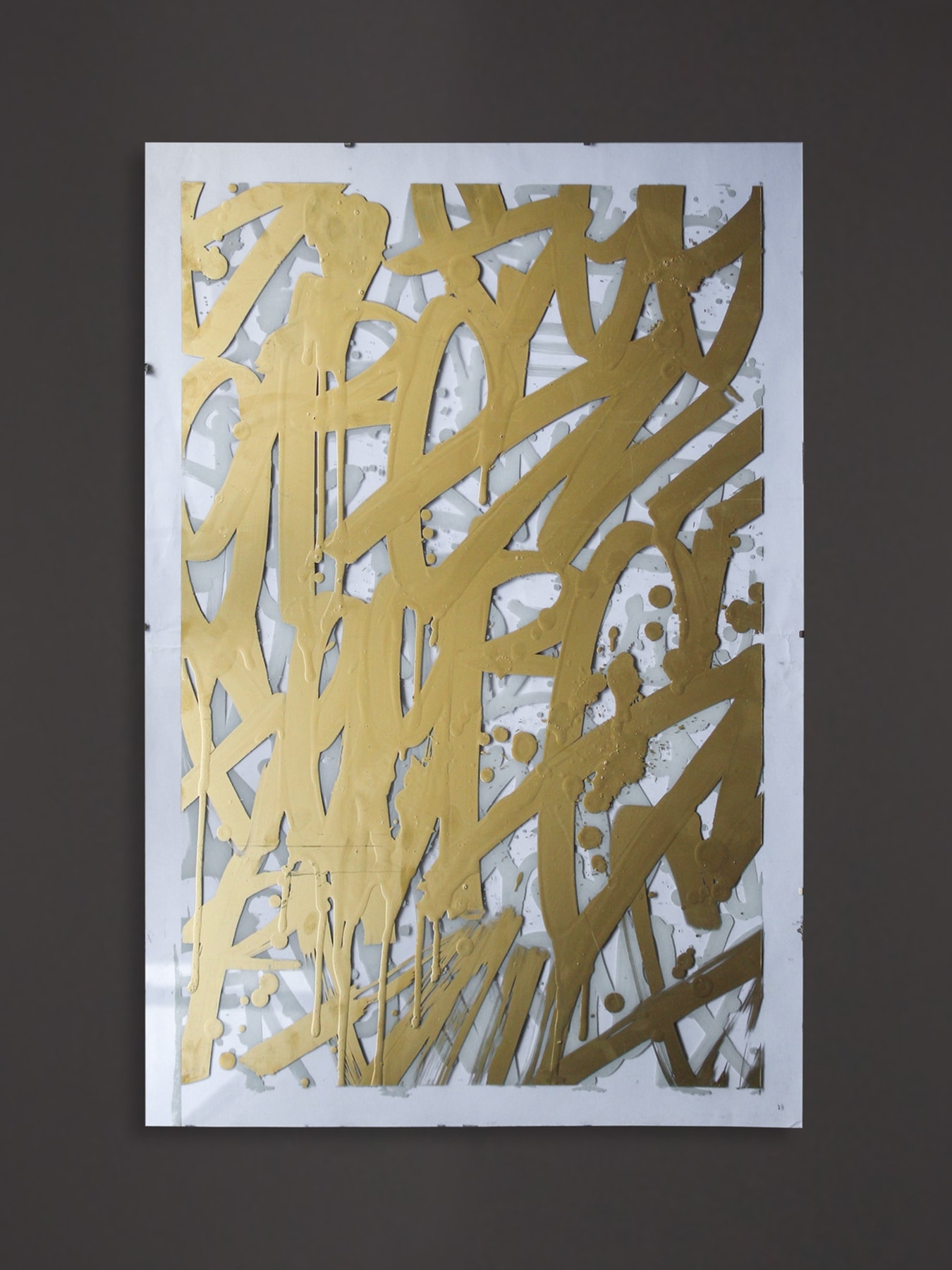
What do people associate with the 1980s? The invention of the Internet? Freddie Mercury as Mr. Bad Guy? The rise of Wall Street? Maybe a bit of all of them. Truth be told, there was much more than that to discover during this period, and Fillin Guas from the artist collective Broke.Today agrees. The native of Munich presented the new BMW M5 in a new light at the Calling Schnell festival, which addressed the 1980s and 1990s. Can the legendary sports sedan represent two worlds that appear to be incompatible at first glance? The artist reveals how that is possible and the concept behind his installation in an interview.
Fillin Guas, when people contemplate your art, large walls and bridges immediately come to mind – graffiti pieces on urban canvases. Do you also see yourself as a graffiti artist?
From my point of view, graffiti always is and has been unwanted, illegal. I think that is the difference between graffiti and street art or urban art – whatever you want to call it. The idea behind graffiti is to have the museum drive through the city when the art is located on a train or large building walls. That’s great, and it gave me my first points of contact with art.
But in light of what I make today, I would not call myself a graffiti artist. Of course, it’s inspired by graffiti, by the tags that serve as a kind of signature. Tags are the smallest components of graffiti art, if you will. And in the beginning, I simply used them to develop a pattern, a pattern that can be combined with objects, other images and entire spaces and walls. I once called it “deluxe vandalism” in order to make the idea of street art socially acceptable. But it is not classic graffiti.


Your art is often dynamic, mantra-like and black and white. How do you arrive at your forms and works? Do you have a process?
The process behind my works has resulted a bit from the fact that I have worked together with my collective on many large projects. And I could do what I myself wanted only in the time between those projects – in the minutes or hours when my mind was at rest. That is why I further developed my tags, which are sometimes entire sentences, into formally aesthetic forms and patterns that I later applied to glass, walls or objects. I practice this type of creation to this day. It is also a pleasant occupation for me during which I hardly reflect and focus only on the aesthetics of the piece.

Dynamics, speed and enjoyment are attributes that also play a key role in the vehicles of BMW M. What is your connection to the BMW M brand?
I’ve been crazy about cars ever since I was a child, especially fast ones. I also drive a motorcycle. For people like me who come from Munich, the brand BMW is like a home team: We have a certain connection to it from an early age. But BMW M was a new experience for me: I’ve never driven a car like that! Even just looking at the cars, I find them attractive and extremely aesthetically appealing.
How did you transform from a street artist to an object artist?
My development from a street artist working outside on walls to an artist producing images, which I consider to be formal aesthetic design objects, was gradual. As someone who has had a rather short attention span since birth, I started painting on glass in order to create images that could look different every day. They are not static motifs. You can rotate the images, turn them, combine them with different backgrounds or coloured papers and add photographs. In that way, the viewer can become the creator of the image themself.
Something I took away from my design studies and that I was always curious about was working broadly on a concept. By that I mean systematically going through an idea and exhausting its possibilities. That’s why I began moving away from two-dimensional glass plates at one point and thinking in terms of space, objects, large building walls – really everything. Several years ago, I created my exhibition “Fillins Welt” (“Fillin’s World”) around this concept. All kinds of objects are tagged there, from shirts and surfboards to basketballs.
Later, through my work with the artist collective Broke.Today, I had more contact with the performing arts. For me, someone who primarily works in the visual arts, that was a source of inspiration. After all, I had defined myself as an artist transforming time into space up to that point. And people could perhaps see or touch the results. But when you think in terms of a timeline – whether in a video or a play or while a musician is performing – time remains time. I find that fascinating, too.
As someone who has had a rather short attention span since birth, I started to create images that could look different every day.







At the Calling Schnell festival, you presented a piece that incorporates the new BMW M5. What is your concept behind this creation?
There are two elements that inspired me to create this installation. One of them was the duality of the new BMW M5, which is expressed by its hybrid drive, for instance. The other was the topic of the festival, which plays with the stereotypes of the 1980s: Wall Street, car phones, high finance. But at the same time, virtually on the other side of the same street in the same city, something completely different was taking shape: street culture, hip-hop culture, graffiti. Something that also influenced me. That’s how we arrived at this concept, which we called “Two Worlds” and which generates a great contrast: luxury, in this case a car, serves as a platform for tags, which are often viewed as disreputable. But they become something beautiful when multiplied to form a pattern and mesmerise the viewer.
You design not only objects but entire spaces. How do your approach and creative process for the two differ?
The work process is definitely different. When I work with entire spaces, I work a lot more with spray cans or even with fire extinguishers that are filled with paint. That process is almost a performative “colour massacre”. But in terms of brainstorming and the concept, I always try to understand everything as a canvas. I imagine spaces and objects as canvasses. In the end, the approach is actually quite similar.
If you had to decide between spray cans and markers, which would be your favourite and why? And how is working with these two tools different?
Every tool has its advantages. A fire extinguisher filled with paint is simply fun to use, and I can work on pretty much any surface with spray cans. But if I had to choose, I would probably pick a black marker on smooth surfaces. And all of the objects and spaces should be white!
The bigger, the better! I once had the idea of creating an entire racetrack.
If you could choose any object, room or building for your artistic creations, what would it be and why?
The bigger, the better! Enormous fire protection walls that are 80 by 20 metres are a lot of fun and challenging to boot. And if I may wallow in delusions of grandeur for a moment, I once had the idea of creating an entire racetrack. I would prefer an oval, which is to say, a high-speed track. And everything there is tagged: the asphalt, the crash barriers and the cars. And from an aerial perspective, which is recorded using a drone, you can see the vehicles racing through the pattern – almost invisible, like chameleons.


Über das Event.
Über das Event.
Cars, art, drinks, and the golden age of automobile luxury: the Calling Schnell festival at Munich’s “Ziegelei 101” represented an homage to New York in the eighties and nineties. Back then, in the canyons of Manhattan, fast cars, chunky car phones and deals worth millions were the order of the day. On the opposite side of Wall Street dollars and Broadway glamour something entirely new came about: the rise of graffiti art and hip-hop culture. Predominantly shaped by the deteriorating areas, they produced a creative contrast that infused the city with new life. And fascinates until this day.
Fuelled by many famous automobiles of that era – including the BMW M8 prototype, a BMW M5 E34 and a McLaren F1 –, a passionate community and a spirit of street and luxury, the Calling Schnell festival invited everyone to party and shop talk.






















